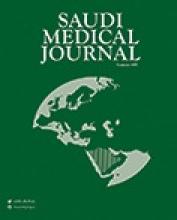Abstract
OBJECTIVE: To analyze integrons gene cassettes Class I among Escherichia coli (E. coli) isolates from Sudan and to determine their effect on the prevalence of resistance to antimicrobials.
METHODS: This cross-sectional study was conducted at 6 hospitals in Khartoum State, Sudan between April and August 2011. Escherichia coli (n=133) isolated from clinical specimens of patients were included. Isolates were identified and tested for antimicrobial susceptibility following standard procedures. Multi-drug resistance (MDR) patterns was defined as non-susceptibility to ≥3 antimicrobials. Class I integrons was detected by polymerase chain reaction, and gene cassettes were characterized via sequencing analysis.
RESULTS: Of the 133 E. coli isolates, 40.6% (n=54) harbored Class I integrons. All the 54 integron carriage, E. coli was found to be MDR strains. Integron carriage isolates confer higher levels of resistance than any other isolates (p<0.05) such as amoxicillin-clavulanic acid (66.7% versus 36.7%), ceftazidime (46.3% versus 17.7%), chloramphenicol (29.6% versus 7.6%), ciprofloxacin (70.4% versus 43%), tetracycline (88.9% versus 57%) and trimethoprim-sulfamethoxazole (98.1% versus 69.6%). Sequencing of gene cassettes harbored mostly dihydrofolate reductase (dfrA), which encodes resistance to trimethoprim and aminoglycoside adenyltransferase (aadA) that encodes resistance to streptomycin. The most frequent combination types were dfrA17 and aadA5 genes.
CONCLUSION: Class I integrons were quite common and its carriage contributed significantly to the emergence of MDR among E. coli. Nevertheless, factors leading to the wide spread of integrons are still to be determined.
- Copyright: © Saudi Medical Journal
This is an open-access article distributed under the terms of the Creative Commons Attribution-Noncommercial License (CC BY-NC), which permits unrestricted use, distribution, and reproduction in any medium, provided the original work is properly cited.






